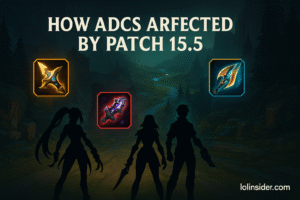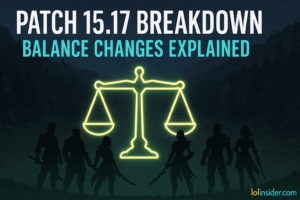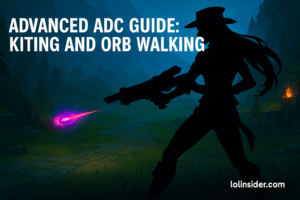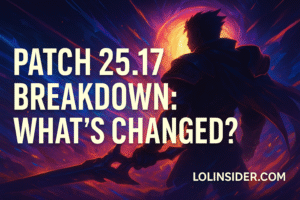League of Legends thrives on its dynamic meta, but behind every patch is Riot’s constant effort to maintain balance. Riot’s approach to champion nerfs and buffs isn’t random—it’s a calculated process blending data, pro play, and community feedback.
Whether it’s toning down an overpowered champion dominating solo queue or giving love to an underplayed pick, every adjustment influences millions of games worldwide. Understanding Riot’s approach to champion nerfs and buffs helps players anticipate meta shifts, adapt strategies, and even predict which champions may rise or fall in future patches.
Chapter 1: Why Balance Matters in LoL
Without regular balance updates, the game would stagnate. Some champions would remain permanently broken, while others would disappear into obscurity. Riot’s balance philosophy revolves around:
- Fairness: Ensuring no champion feels unbeatable.
- Diversity: Keeping multiple strategies viable.
- Pro Play vs Solo Queue: Balancing across skill levels without ruining either.
Chapter 2: The Metrics Riot Uses
2.1 Win Rates
Champions with 55%+ win rates over large sample sizes are usually flagged for nerfs. Conversely, champions stuck below 45% for too long may receive buffs.
2.2 Pick and Ban Rates
If a champion appears in nearly every game due to power or safety, it signals unhealthy dominance.
2.3 Pro Play Data
Some champions may look balanced in solo queue but dominate professional matches (e.g., Azir, Ryze, Aphelios). Riot often balances these champions with pro play in mind.
2.4 Champion Mastery Skew
If only one-tricks succeed with a champion while the average player struggles, Riot may simplify mechanics or adjust scaling.
Chapter 3: Types of Nerfs
- Damage Reduction: Lowering ability ratios or base damage.
- Cooldown Increases: Reducing spell spamming or trading power.
- Durability Adjustments: Lowering base HP, armor, or healing.
- Utility Removal: Weakening crowd control or mobility options.
Nerfs aim to reduce frustration without making champions unplayable.
Chapter 4: Types of Buffs
- Stat Increases: More HP, mana, or base damage.
- Cooldown Reductions: Giving champions more frequent ability access.
- Scaling Improvements: Buffing late-game ratios to make them stronger in longer matches.
- Quality of Life Adjustments: Fixing clunky mechanics or increasing reliability.
Buffs encourage underplayed champions to re-enter the meta without breaking the game.
Chapter 5: The Challenges of Balance
Pro Play vs Solo Queue
- Some champs (like Azir or Ryze) dominate pro play due to coordinated team strategies but underperform in ranked. Riot must often balance between these extremes.
High vs Low Elo
- Champions like Master Yi or Garen may stomp low ranks but fall off in higher ranks. Riot carefully adjusts them to remain fun without overwhelming beginners.
Item Synergy
- Sometimes champions aren’t the problem—the items are. When items like Duskblade or Heartsteel dominate, Riot must decide whether to adjust the item, the champion, or both.
Chapter 6: Case Studies of Buffs and Nerfs
Aphelios (Pro Play Balance)
- Frequently nerfed due to his dominance in pro play, despite mediocre solo queue win rates.
Yuumi (Community Frustration)
- Nerfed multiple times because she felt “unfair” to play against, regardless of win rate.
Aatrox (Sustain Adjustments)
- Buffed and nerfed repeatedly due to healing mechanics creating feast-or-famine gameplay.
Kassadin (Scaling Buffs)
- Once forgotten, small buffs to his scaling made him a late-game monster again.
Chapter 7: Riot’s Long-Term Philosophy
- Keep the Meta Fresh: Frequent small changes prevent stagnation.
- Avoid Perma-Bans: No champion should be so strong that players feel forced to ban them.
- Listen to Feedback: Community perception matters, even if data doesn’t always agree.
- Encourage Variety: Rotating balance shifts keep new strategies alive.
Conclusion: Balance as the Heart of League
Riot’s approach to champion nerfs and buffs is more than just tweaking numbers—it’s about keeping League of Legends dynamic, fair, and fun. By analyzing data, considering pro play, and listening to the community, Riot ensures that every patch brings new challenges and opportunities.
For players, the key is to stay flexible. Champions rise and fall, but those who adapt to Riot’s balancing philosophy will always find ways to climb.







